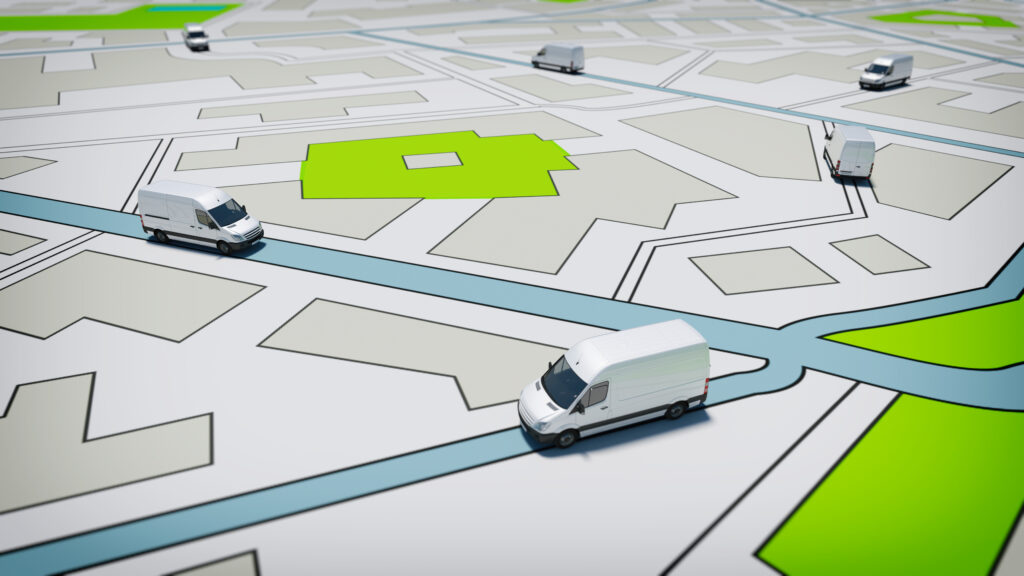Knowing the types of telematics data you’ll have at your disposal can help you prepare to make the most of your EVs. Here’s a deeper look at four areas where telematics can provide efficiency-enabling data and how you can use it to improve EV fleet management.
Simplifying and automating power management
Telematics systems include powerful tools for monitoring and making energy management more efficient, especially in a depot setting. Telematics often works together with smart-charging software to coordinate how energy is being distributed among fleet vehicles and when charging takes place, in order to prioritize charging during the lower cost overnight hours in certain jurisdictions. Some systems can even read the battery levels on individual vehicles and prioritize them for charging based on their upcoming route length and start times. Cabin preconditioning schedules (to pre-cool or heat vehicles so they are ready to drive at the beginning of their shifts) can be set centrally rather than in each individual vehicle. For home charging setups, some telematics can tell if a vehicle hasn’t been plugged in at its usual time and can send an alert to the driver or the fleet manager — helping avoid a situation where a vehicle is out of charge during its next shift.
Enabling driver coaching
With EVs, it’s important to drive at lower speeds with gentle acceleration and make the most of regenerative braking, since these practices help conserve range. Telematics systems allow you to set up individual driver profiles to track how your drivers are performing. The resulting data will allow you to coach individual drivers on more efficient vehicle operation, reducing energy costs and lowering the risk of burning through a vehicle’s range part way through the day.
Providing seamless energy billing
With home charging setups, telematics systems can help manage driver reimbursement. For example, Ford Pro’s E-Telematics system uses a unique identifier for each vehicle that can track what time the vehicle is plugged in and unplugged, a remote tracking feature enabling accurate electricity cost reimbursement. Many telematics systems also include a smart charging function or can integrate with third-party smart charging software to simplify charging management and payments. The Ford system, for example, tracks when a specific vehicle has been plugged into Ford’s proprietary public charging network, Blue Oval. This allows the driver to simply plug in, while billing is managed hands-off by telematics.
Route planning and geofencing

In some environments, route planning can be critical to ensure an EV’s range is utilized to the fullest extent possible. Having a set route that drivers are expected to follow makes battery use more predictable and allows fleet managers to know how much charge the vehicle should be returning with at the end of its shift. Stops at public charging stations can also be added during the day when called for by route length, and geofencing rules can be applied through telematics to alert a fleet manager when a vehicle unexpectedly leaves a predetermined area.
Take our short quiz on telematics for EV fleet management before moving on to the lesson on the role drivers play in a successful fleet electrification.
Reproduction of any or all of this material is strictly prohibited without permission. Please contact fleets@electricautonomy.ca for inquiries. Copyright © 2025 – Electric Autonomy Canada – ArcAscent Inc. – All Rights Reserved
Want to learn more? Sign up or log in so you can track your progress, earn a course certificate and receive exclusive invitations to our live learning sessions.